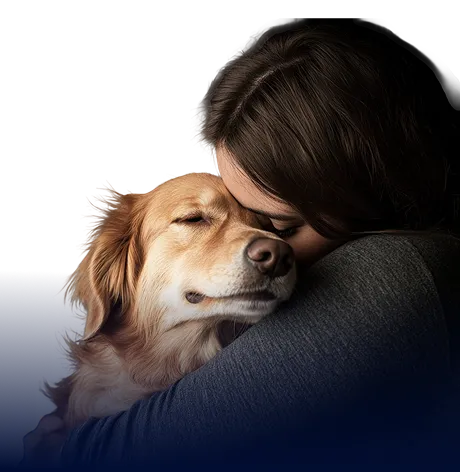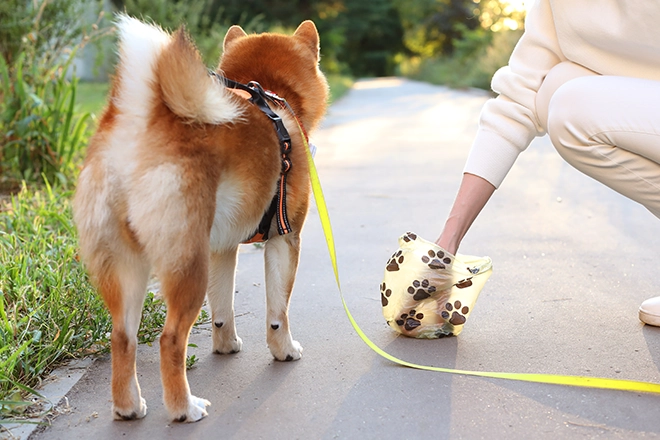For the Purrbabies


Discover how to create a potty routine for your dog to ensure a clean and stress-free home.

When living in a rental, you want to be sure that your pet has a handle on when and where they can use the bathroom. Not only does this ensure a clean, happy home for you but also for your neighbors and their pets. We explore different tips to consider when establishing an effective potty routine for your dog.
First, you want your dog to be potty trained before trying to create a routine around bathroom time. In an ideal world, all dogs would be potty trained as puppies, but that isn’t always realistic; sometimes, you get an older dog that needs to be potty trained.
The fundamentals are the same regardless of age: they are based on building in pee breaks, choosing the right spot to simplify potty training, and being hyper aware of any difficulties your pet has that can be attributed to illness or another concern. You can consider the use of pee pads or crate training to help your dog get the hang of things, and once they do, be consistent so they don’t lose that mindset.
If you have a puppy or a senior dog, that means they need to go out a lot more than an adult dog might. The time that puppies are said to be able to hold their pee is relative to their age. At one month old, they may be able to hold their urine for one hour and so on and so forth. Seniors will likely need to go out around every four to six hours. This is an easier feat for remote workers who are able to step away from meetings and focus on work for a few minutes each time, but can be a challenge for those in the office full time. If you’re able to, even squeezing in time during your lunch break can make a big difference.
In fact, one of the reasons that remote work is so popular is because of pets! A TotalVet survey showed that 42% of pet parents who worked from home during the pandemic saw their dogs as a reason to get out and about more. Plus, 88% of respondents in the same survey said their pets' companionship made them more productive at work.
If you want to work from home—for whatever reason that might be—we found tips and tricks to use when discussing the option with your boss. Fido will thank you!
Positive reinforcement can make all the difference to your dog when it comes to effective routines. Rewards-based systems are always a win with dogs, whether it's treats, toys, pets, or praise, because it creates associations in their brains that doing the right thing earns them a reward. Consider using this as a part of your routine to maintain consistency with your pet.
If you’re unable to take your dog out regularly, consider hiring a dog walker or reaching out to someone in the neighborhood. This can help break up your dog’s day and give them much needed attention and time to exercise, get outside, and sniff around.
Dogs need anywhere from 30 minutes to 2 hours of exercise every day, and a dog walker can provide that with the potential for socializing your pup when they’re out of your house. It can be stressful searching for a professional, safe dog walker, but websites like Rover and Care can make it easier to vet potential walkers.
Another option for daytime activity for your pup is to send them to doggy daycare. This can be an amazing way to get your dog socialized with not only other dogs but people as well. Many doggy daycares have plenty of activities and safeguards in place to ensure your pup has a great time.
When considering this or dog walking, make sure you outline your budget ahead of time because these costs can add up. To also ensure both you and your pup are comfortable, schedule a time to visit the daycare or meet with the dog walker.
The time and place that your dog eats should come into consideration when establishing a potty routine. This is because dogs thrive on consistency. For example, if you work in the office every day, it may be more conducive to feed your dog twice a day: once before you go to work and once when you get home. You might choose to signal your dog that it's time to eat by placing their bowl on the ground near the back door. Feeding and bathroom breaks often go hand in hand, so refrain from giving your dog food or water right before you need to go someplace.
If you’re unsure where to start, talk to your vet about the feeding schedule you have for your dog. They can help you determine how much to feed, how often, and any trainers who can help you establish a better routine at home.
“A majority of dogs will need to be taken out within a set amount of time after feeding. Though the amount of time may vary with each dog, it tends to be pretty consistent with each individual dog. Therefore, consistent feeding times are imperative to allow for regimented bathroom breaks.” – Dr. Dwight Alleyne
There are plenty of reasons to clean up a pet accident well in your home. Not only will this prevent the spread of illnesses or disease, but it can also deter your pet from having another accident in that same area. Some pets will go back to spots over and over as a point of comfort, and you want to train that mindset out of them with consistency and patience.
Some pets might have health issues that make it harder for them to hold their bladders. These conditions can include urinary tract infections, kidney disease, diabetes, and Cushing’s disease, among others.
If you’re noticing your pet urinating more frequently than normal, reach out to your vet and schedule an appointment to rule out anything health-related.
When it comes to cleaning up dog messes, you need to choose correctly—different surfaces and stains require different cleaners. In general, you don’t need harsh cleaners to get the job done. Sometimes, at-home concoctions do the trick:
But for more pesky stains and messes, it’s best to determine how to tackle it by the surface that needs cleaning.
You don’t want to ruin the flooring, especially in a rental. If your dog has an accident, remove any solids, follow up with the vacuum, and then blot at the moisture to remove as much as you can. From there, you can use an enzymatic cleaner followed by an odor eliminator.
Hardwood can be tricky to clean. One thing to avoid is standing water, so a wet mop is not ideal. If you need to clean up a spill, do so promptly and then follow up with a damp mop with a few drops of dish soap in the water mixture. Mop with the grain of the wood and then dry any standing water with a dry cloth.
Whether it's your mattress, couch, clothes, or pet bedding, cleaning urine out of fabric can be tough. If you can, spot-treat the problem area. You can use baking soda, vinegar, dog-safe detergents, enzymatic cleaners, and more to get stains up and things smelling fresh again.
For example, say your dog peed on your mattress. First, you’d remove your bedding and wash—use bleach if necessary. Cover the stain with baking soda and let it sit. This is to absorb as much of the urine as possible. After, vacuum the baking soda and apply a stain solution. Continue to repeat the baking soda, vacuuming, and stain solution as often as is necessary.
Ideally, you’d have pet-safe furniture in your home, which is designed to be more stain and tear-resistant than furniture made with other fabrics. Look for tightly woven fabrics like microfiber, velvet, and furniture made for the outdoors. If you aren’t looking for new furniture but want an easy solution, consider slipcovers.
Establishing a potty routine that your pup sticks to requires trust and patience. Not every rental is pet-perfect, and having a solid routine under your belt with your pup can go a long way in supporting a landlord’s likelihood of continuing to allow pets.








